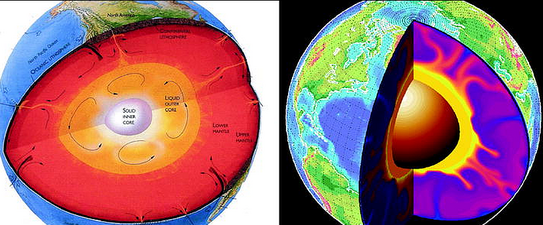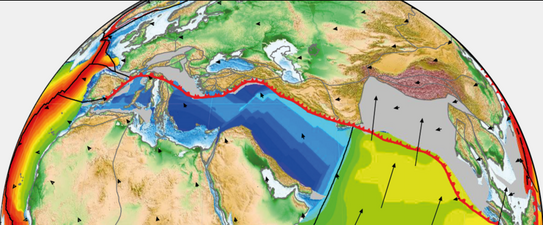Geodynamics
Geodynamics is generally concerned with processes that move materials throughout the Earth. In the Earth’s interior, movement happens when rocks melt or deform and flow in response to a stress field. This deformation may be brittle, elastic, or plastic, depending on the magnitude of the stress and the material’s physical properties, especially the stress relaxation time scale. Rocks are structurally and compositionally heterogeneous and are subjected to variable stresses, so it is common to see different types of deformation in close spatial and temporal proximity. When working with geological timescales and lengths, it is convenient to use the continuous medium approximation and equilibrium stress fields to consider the average response to average stress.
Experts in geodynamics commonly use data from geodetic GPS, InSAR, and seismology, along with numerical models, to study the evolution of the Earth's lithosphere, mantle and core.
Work performed by geodynamicists may include:
- Modeling brittle and ductile deformation of geologic materials
- Predicting patterns of continental accretion and breakup of continents and supercontinents
- Observing surface deformation and relaxation due to ice sheets and post-glacial rebound, and making related conjectures about the viscosity of the mantle
Finding and understanding the driving mechanisms behind plate tectonics.

